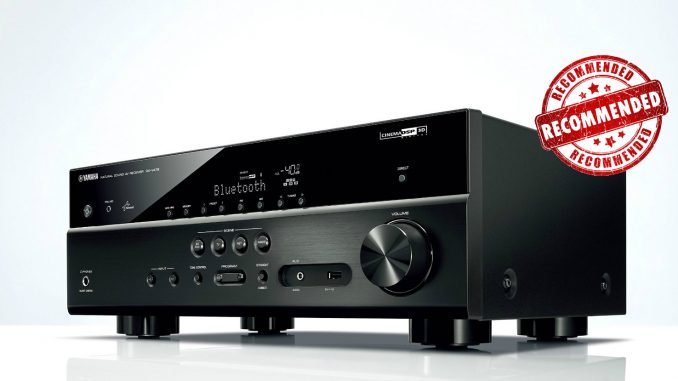
As every season, Yamaha released a new lineup of AV receivers in the RX-V-series, and one of the biggest and most interesting improvements are the wireless streaming capabilities.
Yamaha RX-V479
-
Sound Quality - 82%82%
-
Features - 89%89%
-
Ease of Use - 88%88%
-
Build Quality - 80%80%
SUMMARY
The amount of features and functionality the Yamaha RX-V479 offers is almost unbelievable for this little money.
Wi-Fi and bluetooth connectivity.
Support for DSD.
Detail and musicality.
Flimsy speaker terminals.
The wireless capabilities of the entry model in the series, the RX-V379, is limited to bluetooth connectivity, which is enough for a decent sound quality, and have an Android and iOS remote control app for controlling the receiver and adjust settings. But, the next model up the ladder offers network connectivity via cable or wirelessly, plus additional features and functionality. Because of this, we decided that the first acquaintance with the new RX-V-series is going to be the RX-V479.
Design and Build Quality
Yamaha RX-V479 comes in a traditional cardboard box and includes everything you need to set it up and start using it (except speakers and cables); remote control and batteries, AM and FM antenna, YPAO microphone, owner's manual (CD-ROM), Easy Setup Guide and a Safety Brochure.
Yamaha has not made any cosmetical changes to the new series, and looks exactly the same as last year's RX-V477. This is not necessarily a bad thing as Yamaha has had an elegant and discreet design for the last few years, with well laid out and clearly marked controls. The front is divided horisontally where the lower part is slightly protruding and the upper part is mostly an LCD display. The lower part mainly consists of control buttons and knobs, such as volume, source and tone controls, as well as the very practical SCENE buttons.
On the lower left side you´ll find a 6.35mm headphone output, and on the right side are the volume knob, a USB-A port and a 3.5mm AUX input. While the lower part is made of plastic (to cut down on cost, we assume), the upper part is covered by something reminiscent of acrylic glass (probably is), hiding a quite large and very informative dot-matrix display located in the center.
Just below the display are a set of small buttons to control the radio, and to the right is a 'Direct' button (unit plays back the selected source with the least circuitry in order to reduce the electrical noise). On the left of the upper section you will find the standby button and the input for the YPAO calibration microphone. The top and sides of the chassi is made of a single piece of sheet metal with large perforated slits to help with cooling. The bottom is also perforated and have four large feet to help reduce vibrations.
Moving on to the rear, and it´s surprisingly sparse when it comes to connectivity, but this is however expected in this price range. But do not worry, despite the frugal approach it has enough in- and outputs to satisfy most users; six HDMI inputs and one output (HDCP 2.2), ethernet port and Wi-Fi antenna input, four composite video inputs and one output, three analog RCA inputs, two coaxial and one optical digital audio input. As the RX-V479 is a 5.1-channel receiver it has five pairs of speaker terminals, and a pre out for an active subwoofer. The power cord is not detachable.
The interior of the RX-V479 looks pretty standard, including a large cooling section extending across the whole width of the unit, and filled with printed curcuit boards and output transistors at the back. Compared to the RX-V477, no major changes has been made, and the Yamaha still uses Toshiba’s A1941 and C5198 transistors. On the left you find the power supply with a transformer from Malaysian Bando Electronics, often found in AV gear from other big brand manufacturers, like Sony and Pioneer for example.
In the digital domain we see a Cinema DSP from Texas Instrument used to handle surround sound signals and processing. The HDMI section uses a Silicon Image Sil9573 port processor and a Toshiba TMPM362F10FG ARM-Based 32-Bit Microcontroller with 1 Mbytes of ROM (Flash). A Texas Instrument Burr-Brown PCM9211 receives the digital audio signal, and the PCM1681 DAC handles the conversion. The lower section houses two electrolytic capacitors at 8.200μF each, and a fully shielded Yamaha N-01 Wi-Fi module handling the wireless signals is placed in the top section.
Sound Quality
The YPAO calibration system has been used and developed for quite some time now, and it´s hard to imagine a system that is easier to use while also providing excellent results. Unless you have golden ears and happen to be a surround-sound-setup-maestro we highly recommend using the YPAO. Just let it do its thing, and enjoy a very good and balanced sound.
One of the most important characteristics of the RX-V479 when listening to music is the relaxed and unobtrusive sound character. With the right speakers you can listen to it for days without experiencing any listening fatigue. The sound image is very wide, but lacks a little depth. Considering the price it´s no major concern as the Yamaha compensates this by showering you in an abundance of details. The upper frequencies are in fact one of the highlights of the 479, something we appreciated while listening to music. Combine this with a tonally rich and colorful midrange and you end up with a very cohesive soundstage. The bass is quick, dynamic and has plenty of weight, and the upper bass is clearly defined with great rythmic drive and dynamic capabilities, and although it can´t really compete with more expensive amplifiers, it is still above the standard in this price class.
But, it is with movies and surround sound this receiver shines and shows what it can do. Dialogue is highly intelligible and sound effects are well defined and easy to position, even at low volumes. From the faintest sound to massive explosions, the RX-V479's attention to detail is what sets it apart from lesser AV receivers. The only thing we would like to improve is to add a bit more power, weight and definition in the lower frequencies - but now we´re really nitpicking. It is easy to forget that this is a sub-$400 AV receiver, and with that in mind, it´s an excellent choice for use with a small to medium sized surround system.
Conclusion
Despite the affordable price, the Yamaha RX-V479 is filled with useful features, which is just as important as sound quality. Network connectivity, the possibility of playing 192 kHz / 24-bit FLAC and WAV files, and support for 3D and 4K content was possible on the RX-V477, but this year Yamaha added even more features and possibilities to the list, such as wireless Wi-Fi and bluetooth connectivity, and DSD64 and 128 compatability. The amount of features and functionality the Yamaha RX-V479 offers is almost unbelievable for this little money, and the improvements compared to the 477 makes it worth the minor increase in price. For this reason, the RX-V479 gets a high rating and a recommendation.
GET IT ON eBay!
- FEATURES
- SPecIFICATIONS
- MusicCast wireless multiroom audio support
- Bluetooth® for wireless music streaming and Compressed Music Enhancer
- Built-in Wi-Fi and Wireless Direct
- AirPlay®, Spotify®, Pandora® music streaming service and AV Controller App
- DSD 2.8 MHz / 5.6 MHz, FLAC / WAV / AIFF 192 kHz / 24-bit, Apple® Lossless 96 kHz / 24-bit playback
- Front panel USB connection for digital docking with iPod® / iPhone® and USB thumb drives
- 4K Ultra HD pass-through with HDCP 2.2 support
- YPAO™ sound optimization for automatic speaker setup
- 5.1-channel powerful surround sound


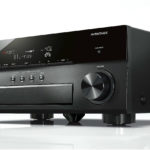
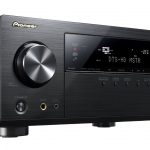

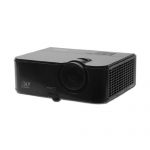
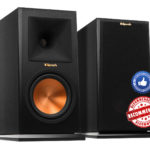


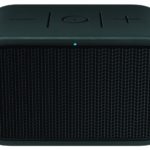
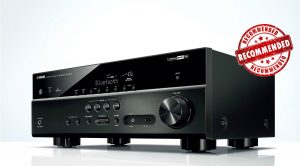


I have this unit, and I concur with every single aspect of this review. It’s an absolute joy to use and listen to.
Probably the most-for-your-dollar receiver I’ve purchased in my entire life. Unless you’re trying to fill an event center with sound, it simply delivers what it needs to when it needs to.